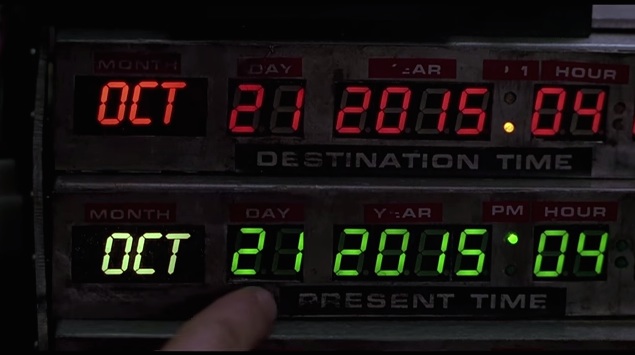DARPA Once Again Proves It’s Great at the Internet
The Defense Advanced Research Projects Agency (DARPA) has a detailed history of pushing boundaries, always willing to take things at least one step further than others would even consider. With the Internet in the midst of a pop culture nerd moment because yesterday was Oct. 21, 2015 — the day Marty McFly traveled to in Back to the Future Part II, DARPA opted to look at the future.

The 2015 depicted in Back to the Future Part II featured hoverboards and flying cars, technologies that are still too ambitious for reality. Literally thinking forward, DARPA used social media as a polling tool to ask the public what technology will be in use by 2045. Some believe that, by then, cars will finally be airborne:
- Space: Interplanetary and interstellar travel, including faster-than-light travel; missions and permanent settlements on the Moon, Mars and the asteroid belt; space elevators
- Transportation & Energy: Self-driving and electric vehicles; improved mass transit systems and intercontinental travel; flying cars and hoverboards; high-efficiency solar and other sustainable energy sources
- Medicine & Health: Neurological devices for memory augmentation, storage and transfer, and perhaps to read people’s thoughts; life extension, including virtual immortality via uploading brains into computers; artificial cells and organs; “Star Trek”-style tricorder for home diagnostics and treatment; wearable technology, such as exoskeletons and augmented-reality glasses and contact lenses
- Materials & Robotics: Ubiquitous nanotechnology, 3-D printing and robotics; invisibility and cloaking devices; energy shields; anti-gravity devices
- Cyber & Big Data: Improved artificial intelligence; optical and quantum computing; faster, more secure Internet; better use of data analytics to improve use of resources
Seeing the Future Through DARPA’s Eyes
DARPA also asked three of its own researchers to forecast 2045’s technological advances. Biological Technologies Office manager and neuroscientist Justin Sanchez pictures a future where technological strides allow users to connect with other people and environments simply by thinking.
“Imagine a world where you can just use your thoughts to control your environment,” Sanchez said. “Think about controlling certain aspects of your home just using your brain signals.”
The entire exercise illustrates DARPA’s mastery of the Internet. (Claiming Back to the Future II’s Doc Brown as a “DARPA alum” was very well-timed.) While others marveled at Michael J. Fox donning the self-lacing Nike MAG sneaker he wore in the film as McFly, DARPA turned Back to the Future Day into an opportunity to seriously consider how advancements in IT will impact the future. They’re thinking about tomorrow and beyond as opposed to dwelling in the moment. What else would you expect from the folks who essentially created the Internet?








